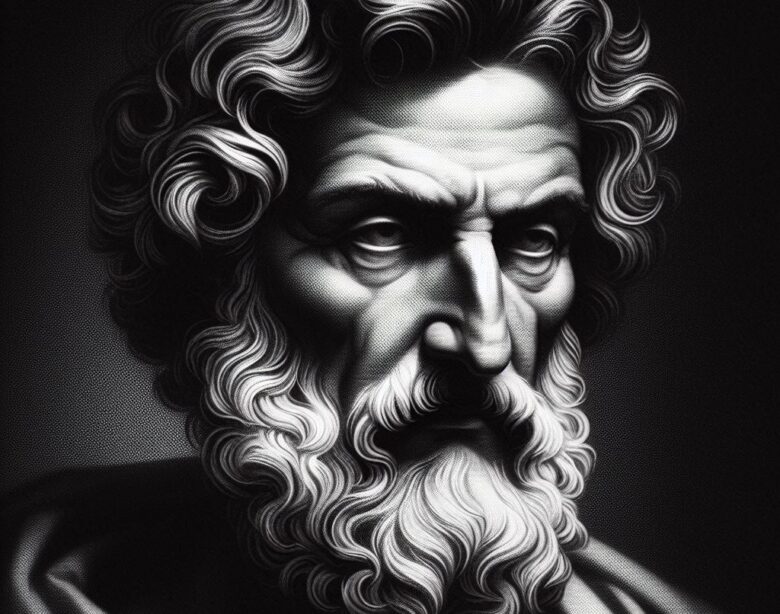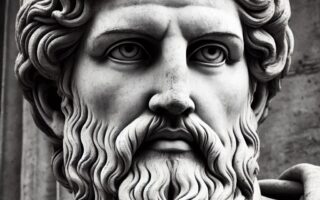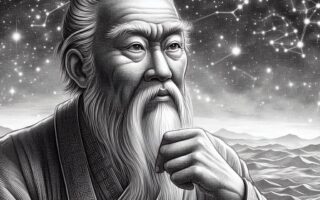Archimedes – The Father of Mathematics
Archimedes of Syracuse, born in 287 BCE and considered one of the greatest mathematicians of antiquity, made groundbreaking contributions to mathematics, physics, and engineering. His inventive mind and rigorous methods laid foundational concepts for future generations, spanning the fields of geometry, calculus, and mechanics. Often called “the father of mathematics,” Archimedes is still remembered today for his discoveries that continue to influence modern mathematics.
Early Life and Education
Archimedes was born in the Greek colony of Syracuse, located on the island of Sicily. His father, Phidias, was an astronomer, and this connection to the scientific world may have played a role in Archimedes’ early interest in mathematics. Although details about Archimedes’ life are sparse, it is believed that he studied in Alexandria, Egypt, which was one of the most prominent centers of learning during his time. There, he likely encountered the works of Euclid and other Greek mathematicians, who greatly influenced his approach to mathematical research.
Upon his return to Syracuse, Archimedes became known for his intellectual curiosity and problem-solving ability, dedicating himself to advancing knowledge in mathematics and other disciplines.
Contributions to Geometry
One of Archimedes’ most famous contributions to mathematics was his work in geometry. He made important discoveries related to areas, volumes, and surface areas of various shapes, including circles, spheres, and cylinders. Many of his geometric proofs are still considered masterpieces of mathematical rigor and creativity.
The Measurement of the Circle
Archimedes is credited with one of the earliest methods for approximating the value of π (pi), the ratio of a circle’s circumference to its diameter. He used a method known as the method of exhaustion to estimate π by inscribing and circumscribing polygons around a circle. By using polygons with increasing numbers of sides, Archimedes was able to calculate an upper and lower bound for π. He concluded that π was between 3 1/7 (approximately 3.1429) and 3 10/71 (approximately 3.1408), which was remarkably accurate for his time.
This work laid the foundation for future studies of π and inspired later mathematicians to develop more precise approximations. Archimedes’ method of exhaustion can be seen as an early form of integral calculus, as it involves dividing a shape into smaller parts to find an approximate area or volume.
The Sphere and the Cylinder
One of Archimedes’ proudest achievements was his discovery of the relationship between the volume and surface area of a sphere and a cylinder. He showed that the volume of a sphere is two-thirds the volume of a cylinder that encloses it, and that the surface area of the sphere is similarly two-thirds the surface area of the cylinder. Archimedes considered this discovery so significant that he requested that a sphere and a cylinder be engraved on his tombstone.
This work on the geometry of the sphere and cylinder demonstrated Archimedes’ deep understanding of three-dimensional geometry, and his findings remain foundational in the study of solid geometry.
The Archimedean Spiral
In addition to his work with circles and spheres, Archimedes studied the properties of a curve known as the Archimedean spiral. This spiral is created by tracing a point that moves at a constant speed away from the center while rotating at a constant angular velocity. Archimedes derived formulas to calculate the area enclosed by the spiral, as well as the length of the curve, using geometric methods. His exploration of spirals opened the door to new mathematical techniques and inspired future studies in calculus and curve theory.
Archimedes and the Beginnings of Calculus
Though integral calculus would not be fully developed until the work of Isaac Newton and Gottfried Wilhelm Leibniz in the 17th century, Archimedes’ work can be seen as an early precursor to many of the ideas central to calculus.
The Method of Exhaustion
Archimedes used the method of exhaustion to find areas and volumes of irregular shapes. This technique involves approximating a geometric shape with a series of simpler shapes, such as polygons, whose areas can be easily calculated. By increasing the number of sides of the polygons, Archimedes was able to obtain increasingly accurate estimates of the areas of curved shapes like circles and parabolas.
One of the most famous examples of Archimedes’ use of the method of exhaustion is his determination of the area under a parabola. He showed that the area of the segment of a parabola is four-thirds the area of a triangle with the same base and height. This result foreshadowed the development of integral calculus, as it involves summing an infinite series of progressively smaller areas to calculate a total.
The Quadrature of the Parabola
Archimedes’ work on the quadrature (finding the area) of the parabola is another example of his contribution to early calculus. He used geometric reasoning to show that the area of a segment of a parabola is equal to four-thirds the area of a certain inscribed triangle. This process of finding areas through summing smaller parts is strikingly similar to the later techniques used in calculus.
Contributions to Physics and Engineering
In addition to his mathematical achievements, Archimedes made significant contributions to the fields of physics and engineering. His work in these areas often combined mathematical theory with practical applications, and many of his inventions are still studied and admired today.
The Archimedean Principle and Buoyancy
One of Archimedes’ most famous discoveries is the principle of buoyancy, also known as Archimedes’ principle. This principle states that an object submerged in a fluid experiences an upward force equal to the weight of the fluid it displaces. Archimedes is said to have discovered this principle while taking a bath and observing the water level rise as he immersed himself. Upon realizing the implications of this observation, Archimedes is said to have run through the streets shouting “Eureka!” (“I have found it!”).
Archimedes’ principle has far-reaching applications in science and engineering, including in the design of ships, submarines, and other vessels that rely on buoyancy to float.
The Archimedean Screw
Another of Archimedes’ most famous inventions is the Archimedean screw, a device used to pump water from one level to another. The screw consists of a helical surface inside a cylinder, and when rotated, it lifts water or other fluids. This invention was used in ancient times for irrigation and drainage, and it remains in use in some modern applications.
The Archimedean screw is an example of Archimedes’ ability to apply mathematical and physical principles to solve practical problems, and it highlights his dual role as a mathematician and engineer.
Influence on Later Mathematicians
Archimedes’ work had a profound influence on later mathematicians and scientists, particularly during the Renaissance and the Scientific Revolution. His writings were studied and admired by figures such as Galileo Galilei, Johannes Kepler, and Isaac Newton, who built upon his ideas and techniques.
The Revival of Archimedean Methods in the Renaissance
During the Renaissance, scholars rediscovered many of Archimedes’ works, which had been preserved in Latin and Greek manuscripts. His mathematical methods, particularly his use of the method of exhaustion and his work on the geometry of solids, inspired mathematicians to explore new areas of mathematical analysis.
For example, Johannes Kepler used Archimedean methods to calculate the volumes of wine barrels, and Galileo was influenced by Archimedes’ work on motion and mechanics.
Archimedes and the Development of Calculus
Isaac Newton and Gottfried Wilhelm Leibniz, the dual-creators of calculus, both acknowledged the influence of Archimedes on their work. Newton, in particular, praised Archimedes for his use of geometric methods to solve problems that would later be addressed by calculus.
Archimedes’ method of exhaustion, his study of curves like the Archimedean spiral, and his work on areas and volumes all foreshadowed the development of calculus, and his influence can still be seen in modern mathematical techniques.
Conclusion
Archimedes’ contributions to mathematics, physics, and engineering have left an indelible mark on the history of science. His work in geometry, particularly his discoveries related to circles, spheres, and cylinders, laid the foundation for much of modern mathematics. His use of the method of exhaustion and his early exploration of infinitesimals paved the way for the later development of calculus.
Beyond mathematics, Archimedes’ inventions and discoveries in physics and engineering, such as the Archimedean screw and the principle of buoyancy, continue to have practical applications in modern technology. His influence can be seen in the work of countless mathematicians and scientists throughout history, and his legacy as one of the greatest minds of antiquity endures to this day.
Please Visit Our Sponsors:
We only support vendors that we use ourselves in our home. The links below are our own links or affiliate links but know that we use all of these now, or have in the past. As the author/creator of this blog, I also tutor mathematics on Wyzant, sell on Etsy, create content on TpT, and learn Korean on Rosetta Stone.





